iit architecture & furniture spring 2016: donate
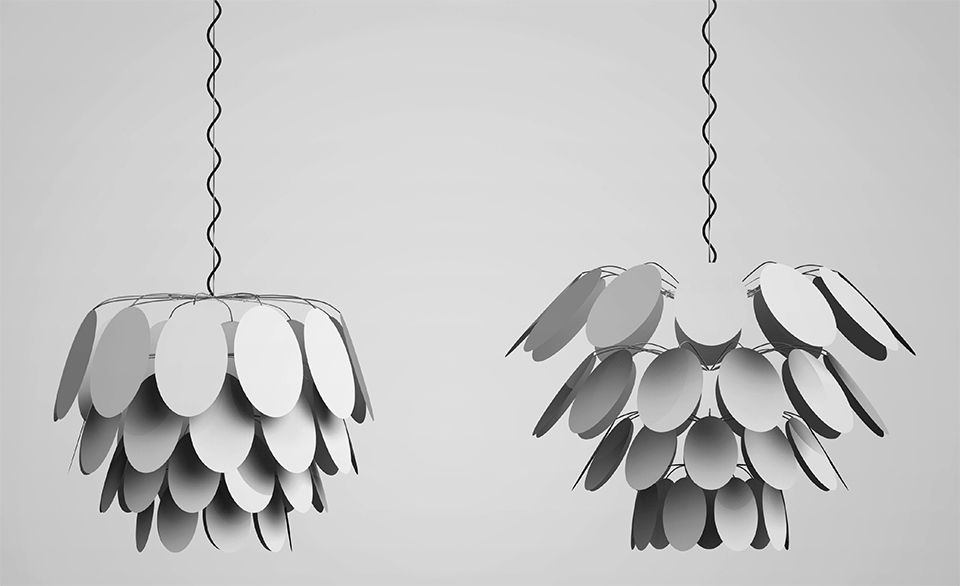
assignment
Donate: Searching for Relationships Between Charity, Craft & Consumption In the Design, Fabrication & Auctioning of Functional Objects
“Before I go any further, however, I think I should explain exactly whom I mean by architect: for it is no carpenter that I would have you compare to the greatest exponents of other disciplines; the carpenter is but an instrument in the hands of the architect.” Leon Battista Alberti, On the Art of Building in Ten Books, Joseph Rykwert, tr. (Cambridge, MA: MIT Press, 1988), p 3
“…Knowledge will only come by individual experience. At the start, basic design and shop practice combined should introduce to the students the elements of design, surface, volume, space, color, and simultaneously the ideas of construction, of building, by developing three-dimensional exercises to be carried out with materials and tools. In succeeding years of training, the design and construction studio, supplemented by field experience during summer vacations, will coordinate further experience with the broadening of knowledge. Construction should be taught as part of design, for they are directly interdependent…” Walter Gropius, Proceedings (ACSA Press, July 1959), p 59.
Part 1 - Tweaking
“Haec autem ita fieri debent, ut habeatur ratio firmitas, utilitas, venustatis. (Now these should be so carried out that account is taken of strength, utility, grace.)” Marcus Vitruvius, De architectura, c. 25 B.C., 1.iii.ii
Vitruvius took all of architectural history and distilled it into 3 requirements. Our initial investigation will be into the validity of utilizing Vitruvius’ 3 requirements of strength, utility & grace to evaluate existing functional objects as a method for suggesting “tweaks” or possibilities for improvement.
Part 2 - Prototyping/Fabrication
What makes people want, desire and ultimately make the decision to bid on and/or purchase something? What is the difference between needing something and wanting something? Can we as designers (and in this case fabricators) “design” want &/or need? What are the ethics of “creating a demand”?
Objectives: Alberti’s “gentleman architect” vs. Gropius’ “designing & constructing architect”
Working at full scale offers students the opportunity to experience in a single assignment through sketches, drawings, digital models, physical models, full-scale mock-ups, completed prototypes and installation, the traditional architectural sequence of schematic design, design development, presentation drawings, fabrication drawings, fabrication, use and analysis.
Communication:
Discussions and group reviews will be an opportunity for students to apply drawing & 3 dimensional physical modeling as a means of exploration, presentation and representation. Students will present and discuss research, sketches, schematic design, design development, presentation and fabrication drawings. Student project statement’s will be presented, discussed and debated in tandem with their drawings as an opportunity to compare conceptual, drawn and fabricated intent.
“Before I go any further, however, I think I should explain exactly whom I mean by architect: for it is no carpenter that I would have you compare to the greatest exponents of other disciplines; the carpenter is but an instrument in the hands of the architect.” Leon Battista Alberti, On the Art of Building in Ten Books, Joseph Rykwert, tr. (Cambridge, MA: MIT Press, 1988), p 3
“…Knowledge will only come by individual experience. At the start, basic design and shop practice combined should introduce to the students the elements of design, surface, volume, space, color, and simultaneously the ideas of construction, of building, by developing three-dimensional exercises to be carried out with materials and tools. In succeeding years of training, the design and construction studio, supplemented by field experience during summer vacations, will coordinate further experience with the broadening of knowledge. Construction should be taught as part of design, for they are directly interdependent…” Walter Gropius, Proceedings (ACSA Press, July 1959), p 59.
Part 1 - Tweaking
“Haec autem ita fieri debent, ut habeatur ratio firmitas, utilitas, venustatis. (Now these should be so carried out that account is taken of strength, utility, grace.)” Marcus Vitruvius, De architectura, c. 25 B.C., 1.iii.ii
Vitruvius took all of architectural history and distilled it into 3 requirements. Our initial investigation will be into the validity of utilizing Vitruvius’ 3 requirements of strength, utility & grace to evaluate existing functional objects as a method for suggesting “tweaks” or possibilities for improvement.
Part 2 - Prototyping/Fabrication
What makes people want, desire and ultimately make the decision to bid on and/or purchase something? What is the difference between needing something and wanting something? Can we as designers (and in this case fabricators) “design” want &/or need? What are the ethics of “creating a demand”?
Objectives: Alberti’s “gentleman architect” vs. Gropius’ “designing & constructing architect”
Working at full scale offers students the opportunity to experience in a single assignment through sketches, drawings, digital models, physical models, full-scale mock-ups, completed prototypes and installation, the traditional architectural sequence of schematic design, design development, presentation drawings, fabrication drawings, fabrication, use and analysis.
Communication:
Discussions and group reviews will be an opportunity for students to apply drawing & 3 dimensional physical modeling as a means of exploration, presentation and representation. Students will present and discuss research, sketches, schematic design, design development, presentation and fabrication drawings. Student project statement’s will be presented, discussed and debated in tandem with their drawings as an opportunity to compare conceptual, drawn and fabricated intent.
projects
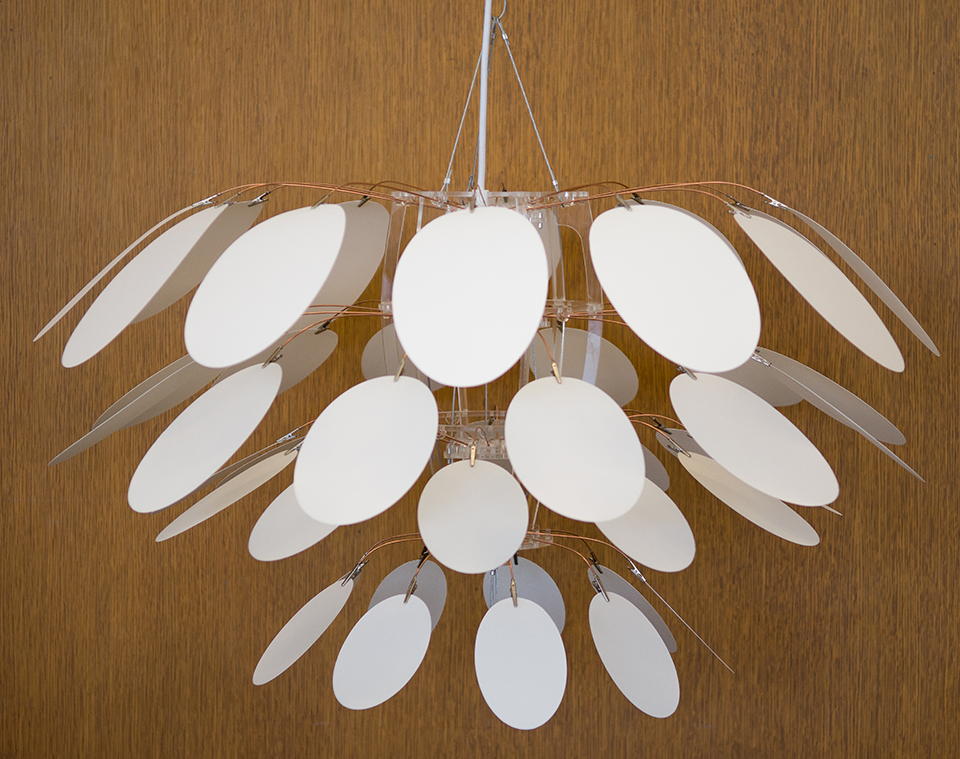
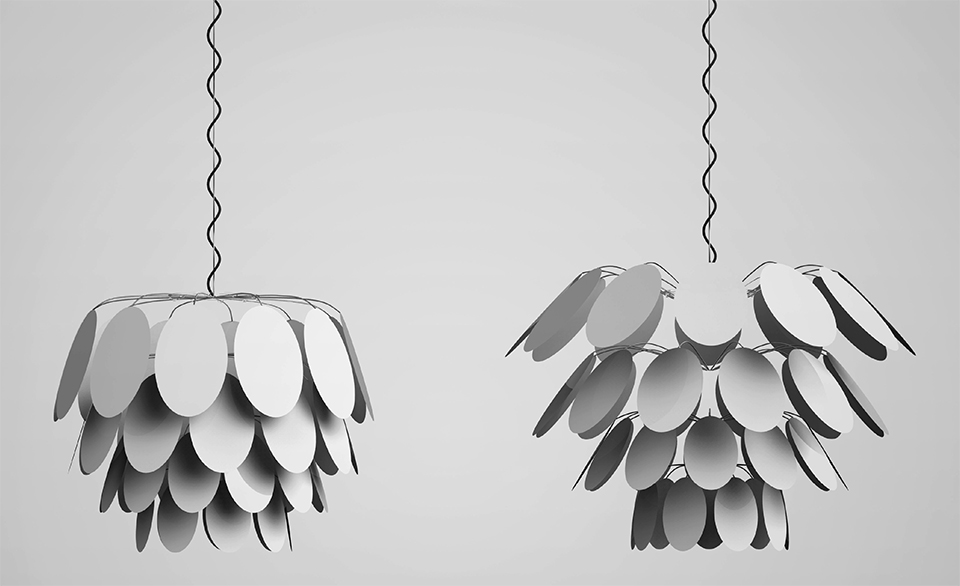
The Lantern is a light fixture aimed to communicate the dreams and wishes of those who engage with it.
With a lamp shade made up of 45 individual pieces of paper, the user is invited and encouraged to interact. Each piece of paper is detachable and re-attachable. The user takes a piece of paper and then writes, draws, or sketches something on the paper and then put it up onto the lamp; it could be a dream, thought, or wish.
My concept was a design that can change over time, a design where the user is the designer.
Another function of the lamp, is that it can open and close. Also, this encourages the user to interact not only as editor of individual lamp components, but the overall composition of the lamp as well. The purely functional idea behind this is to offer a lamp that, in one setting can give a more task like light when hanging over a dining table, or be opened up to provide ambient light. The additional functionality was intended to give the lamp the added dimension of almost being alive.
So, feel free to grab a piece of paper, draw something or just put down a couple of words – let’s start designing!
Frans Hjerten Grahm
With a lamp shade made up of 45 individual pieces of paper, the user is invited and encouraged to interact. Each piece of paper is detachable and re-attachable. The user takes a piece of paper and then writes, draws, or sketches something on the paper and then put it up onto the lamp; it could be a dream, thought, or wish.
My concept was a design that can change over time, a design where the user is the designer.
Another function of the lamp, is that it can open and close. Also, this encourages the user to interact not only as editor of individual lamp components, but the overall composition of the lamp as well. The purely functional idea behind this is to offer a lamp that, in one setting can give a more task like light when hanging over a dining table, or be opened up to provide ambient light. The additional functionality was intended to give the lamp the added dimension of almost being alive.
So, feel free to grab a piece of paper, draw something or just put down a couple of words – let’s start designing!
Frans Hjerten Grahm
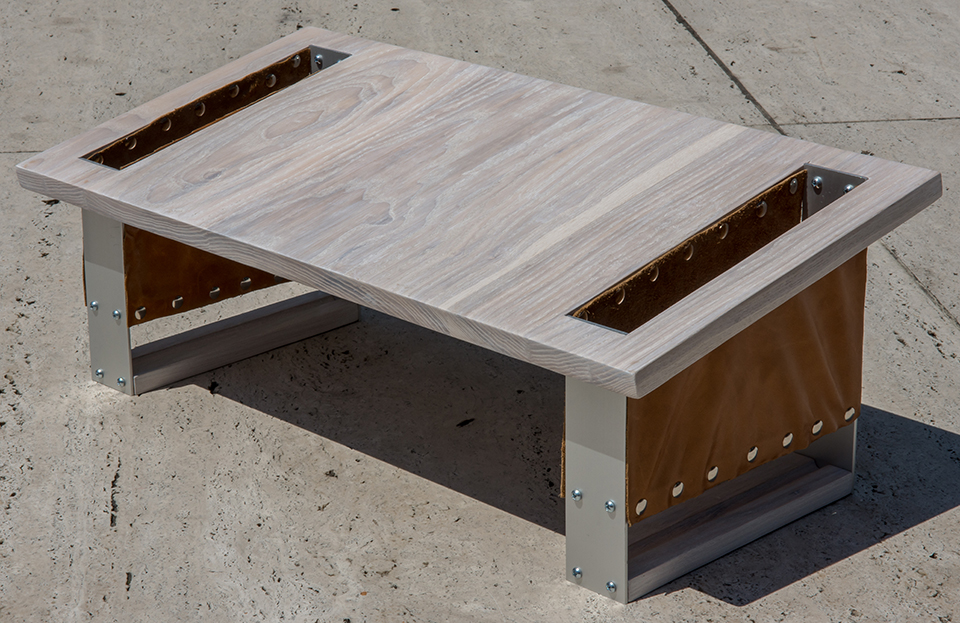
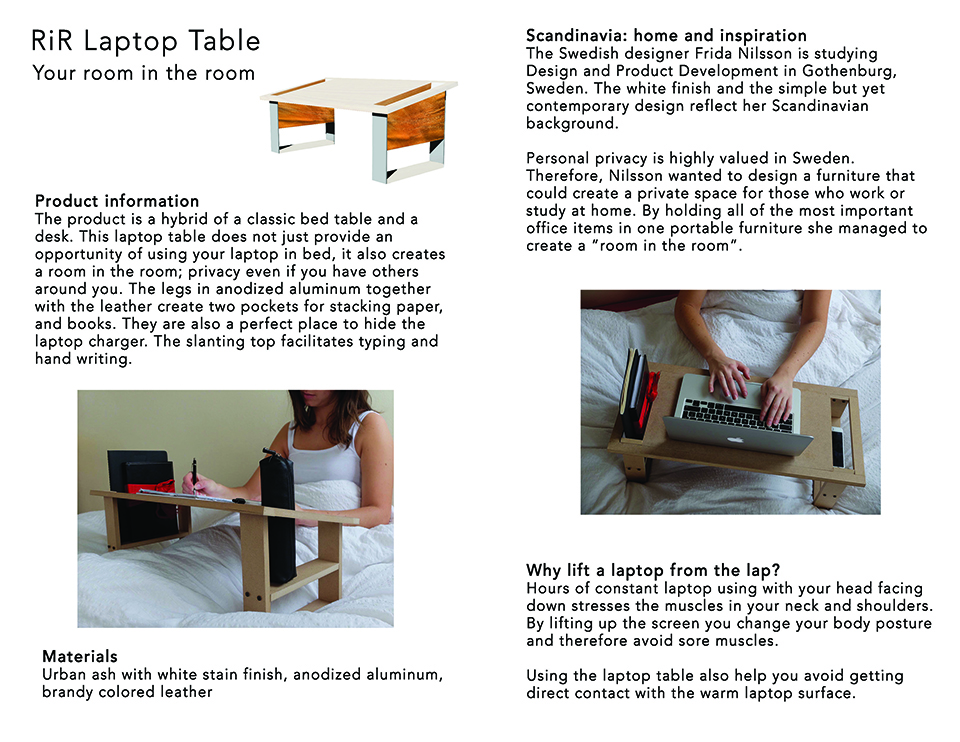
RiR Laptop Table: Your Room in the Room
My project is a hybrid of a classic bed table and a desk. This laptop table does not just provide an opportunity of using your laptop in bed, it also creates a room in the room; privacy even if you have others around you. The legs in anodized aluminum together with the leather create two pockets for stacking paper, and books. They are also a perfect place to hide the laptop charger. The slanting top facilitates typing and hand writing.
Frida Nilsson
My project is a hybrid of a classic bed table and a desk. This laptop table does not just provide an opportunity of using your laptop in bed, it also creates a room in the room; privacy even if you have others around you. The legs in anodized aluminum together with the leather create two pockets for stacking paper, and books. They are also a perfect place to hide the laptop charger. The slanting top facilitates typing and hand writing.
Frida Nilsson
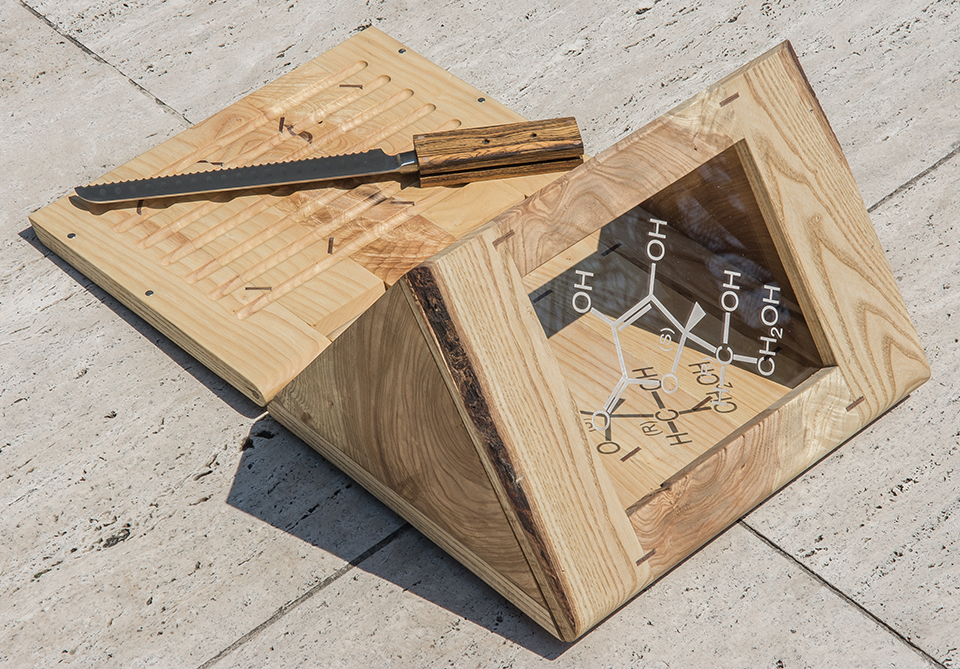
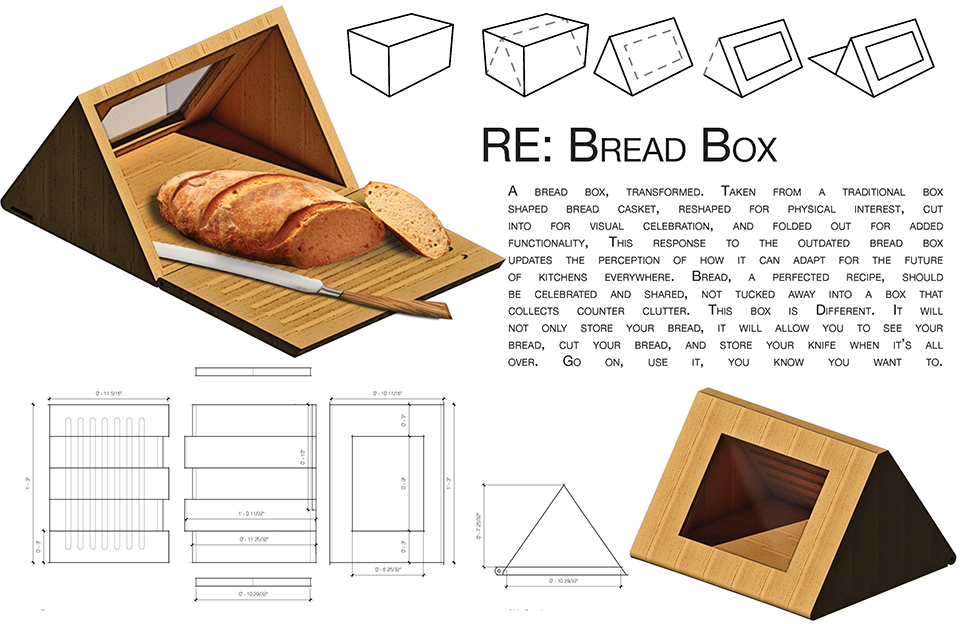
A bread box, transformed. taken from a traditional box shaped bread casket, reshaped for physical interest, cut into for visual celebration, and folded out for added functionality, this response to the outdated bread box updates the perception of how it can adapt for the future
of kitchens everywhere. bread, a perfected recipe, should be celebrated and shared, not tucked away into a box that collects counter clutter. this box is different. it will not only store your bread, it will allow you to see your bread, cut your bread, and store your knife when it’s all over. go on, use it, you know you want to.
Joshua Harris
of kitchens everywhere. bread, a perfected recipe, should be celebrated and shared, not tucked away into a box that collects counter clutter. this box is different. it will not only store your bread, it will allow you to see your bread, cut your bread, and store your knife when it’s all over. go on, use it, you know you want to.
Joshua Harris
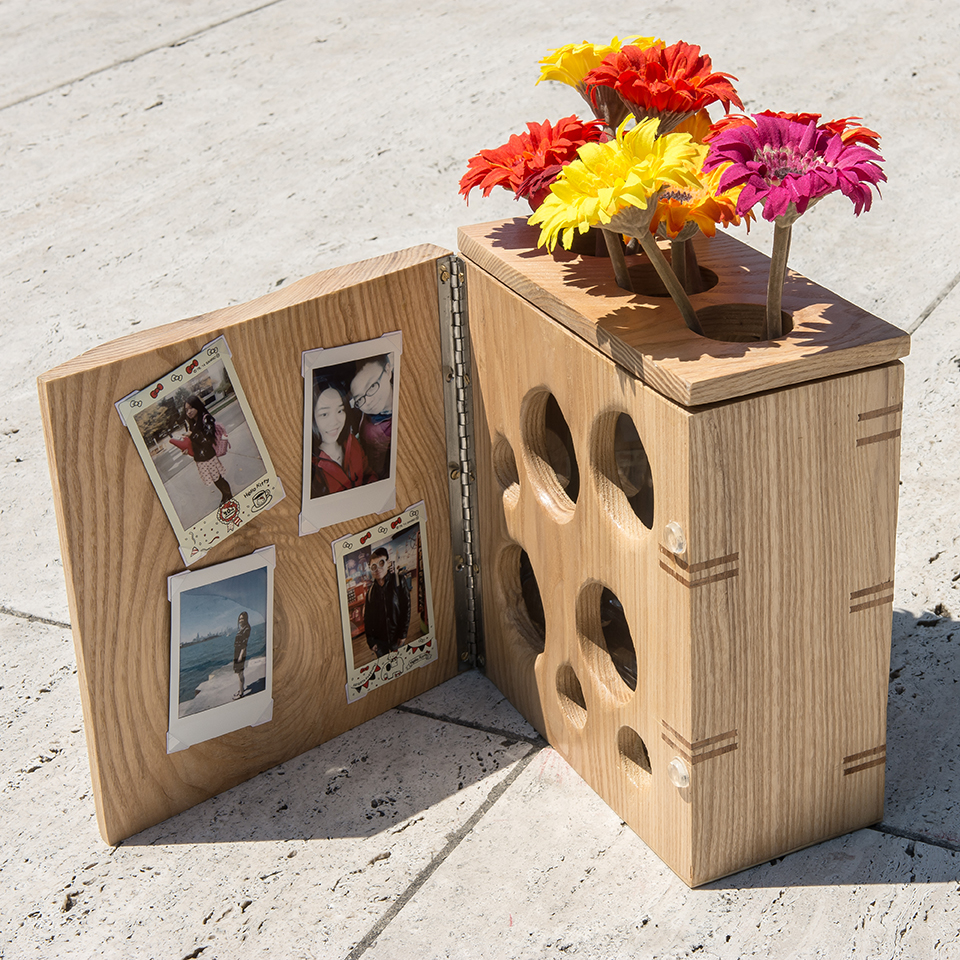
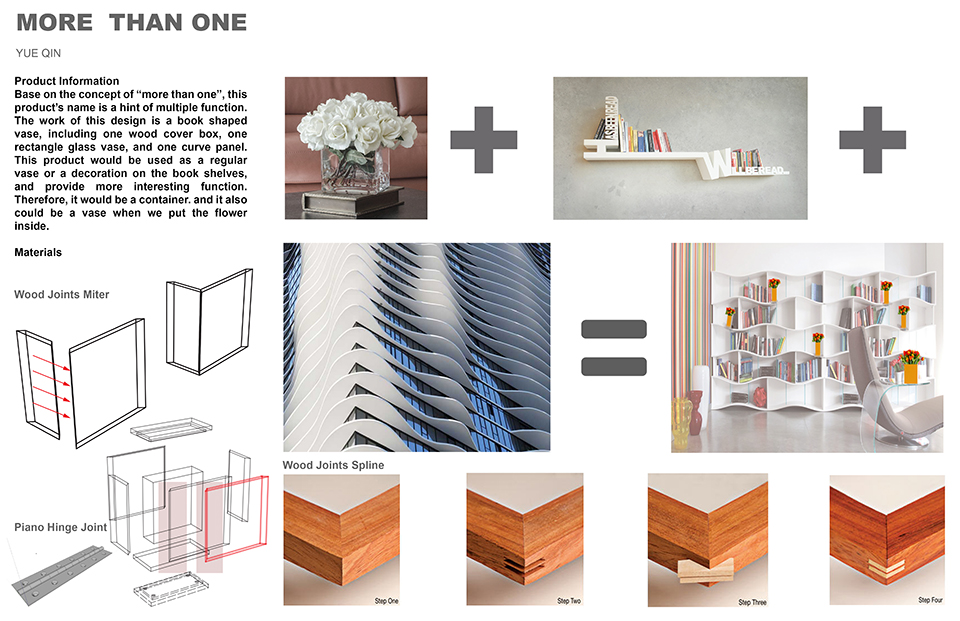
My take on “tweaking” is adding function which in my case is to also add surprise or a hint of the unexpected.
The name "more than one", hints at the projects multiple functions. My design is a book shaped vase, including a covered wood box, concealed space for a rectangular glass vase, and a curved panel acting as both photo album and concealer of the vase inside. This product would be used as a regular vase or as a decorative feature on a book shelf.
Yue Qin
The name "more than one", hints at the projects multiple functions. My design is a book shaped vase, including a covered wood box, concealed space for a rectangular glass vase, and a curved panel acting as both photo album and concealer of the vase inside. This product would be used as a regular vase or as a decorative feature on a book shelf.
Yue Qin
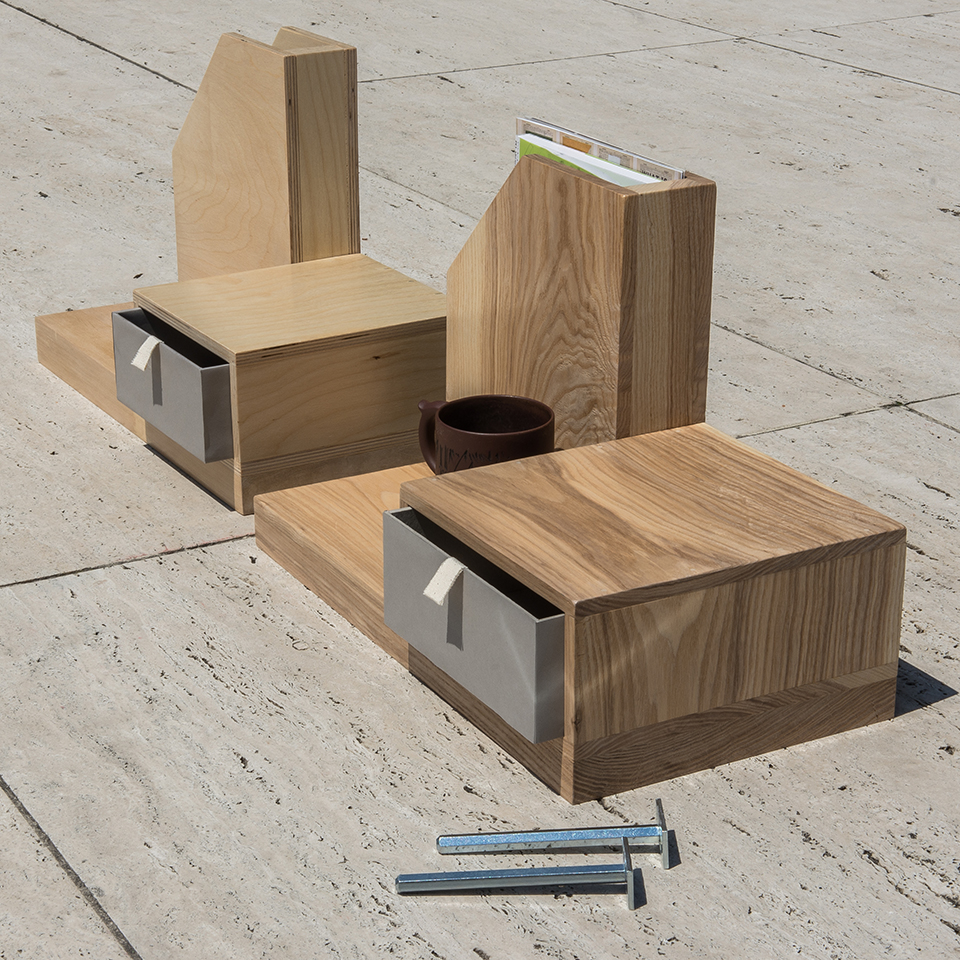
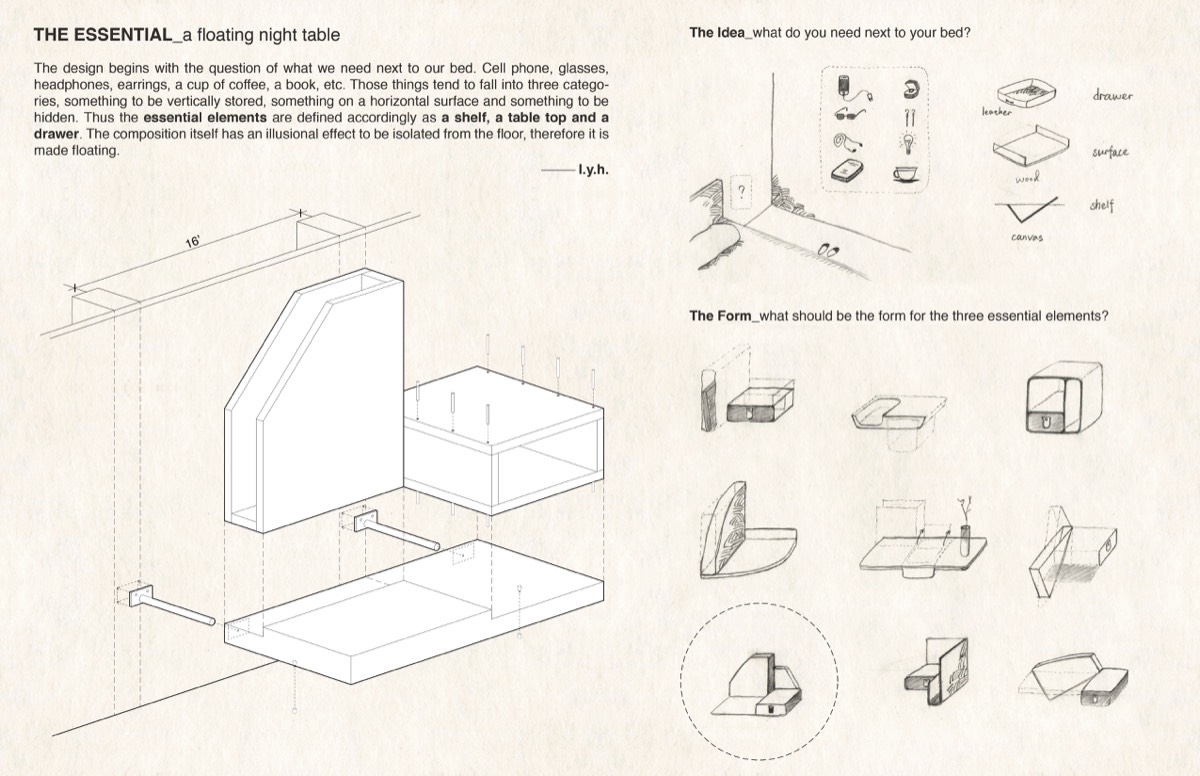
THE ESSENTIAL, a floating night table, began with the question of what we need next to our bed. Cell phone, glasses, headphones, earrings, a cup of coffee, a book, etc.
Those things tend to fall into three categories, something to be vertically stored, something on a horizontal surface and something to be hidden.
Thus, the essential elements are defined accordingly as a shelf, a table top and a drawer. The composition intentionally creates the effect of being isolated from the floor, or floating above the floor.
Yueheng Lu
Those things tend to fall into three categories, something to be vertically stored, something on a horizontal surface and something to be hidden.
Thus, the essential elements are defined accordingly as a shelf, a table top and a drawer. The composition intentionally creates the effect of being isolated from the floor, or floating above the floor.
Yueheng Lu
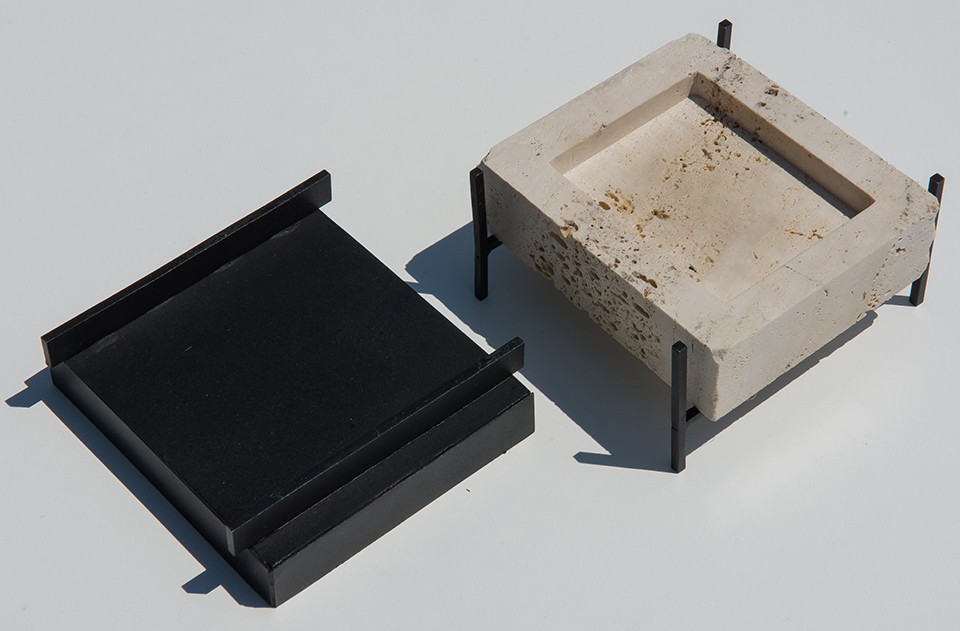
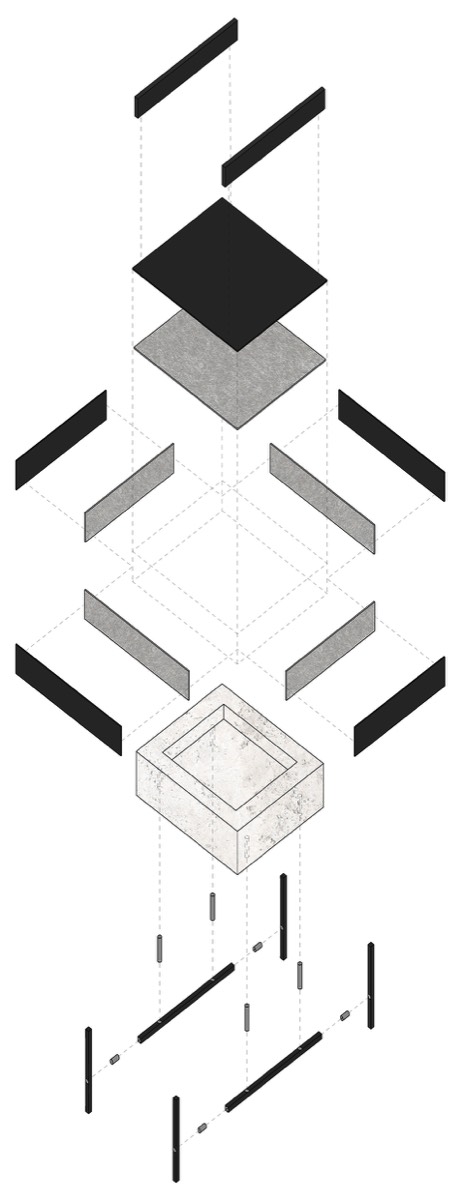
crown hall jewelry box: garrett bernhagen
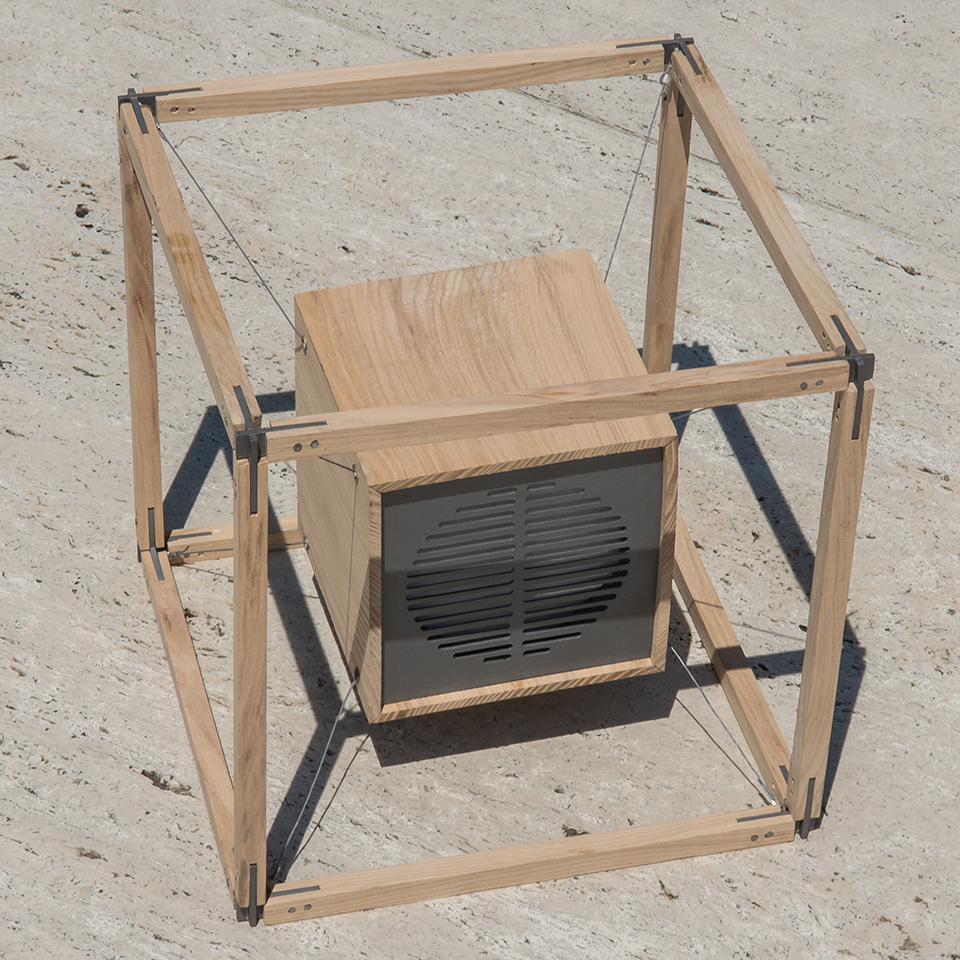
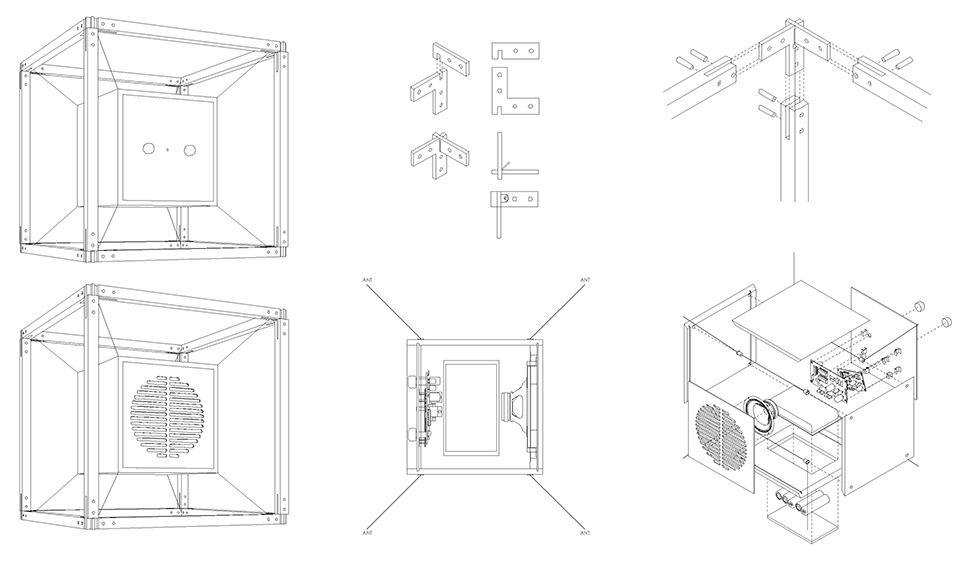

hanging speaker: garrett bernhagen
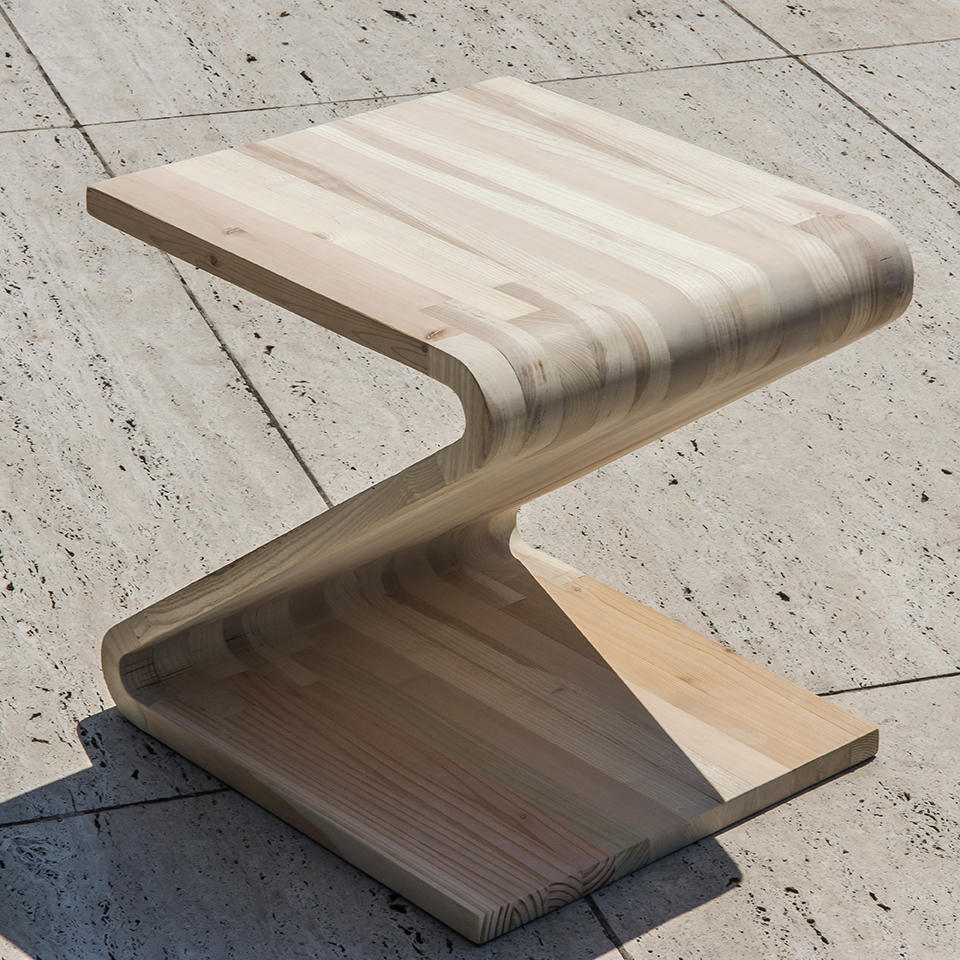
zig zag table chair: bishreit solongo
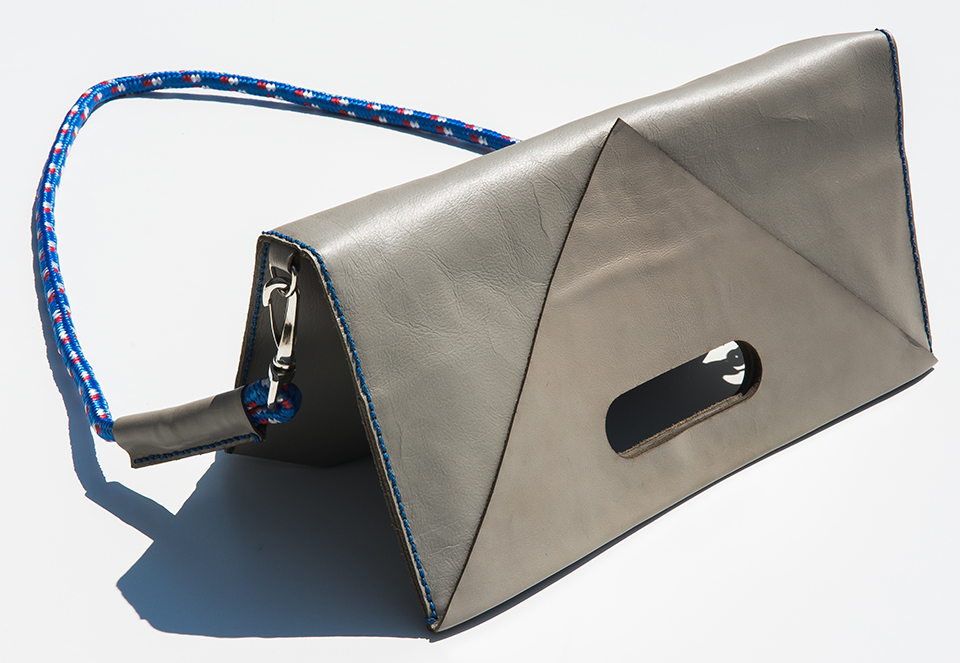
multi-way leather laser cut handbag: hanna heinze
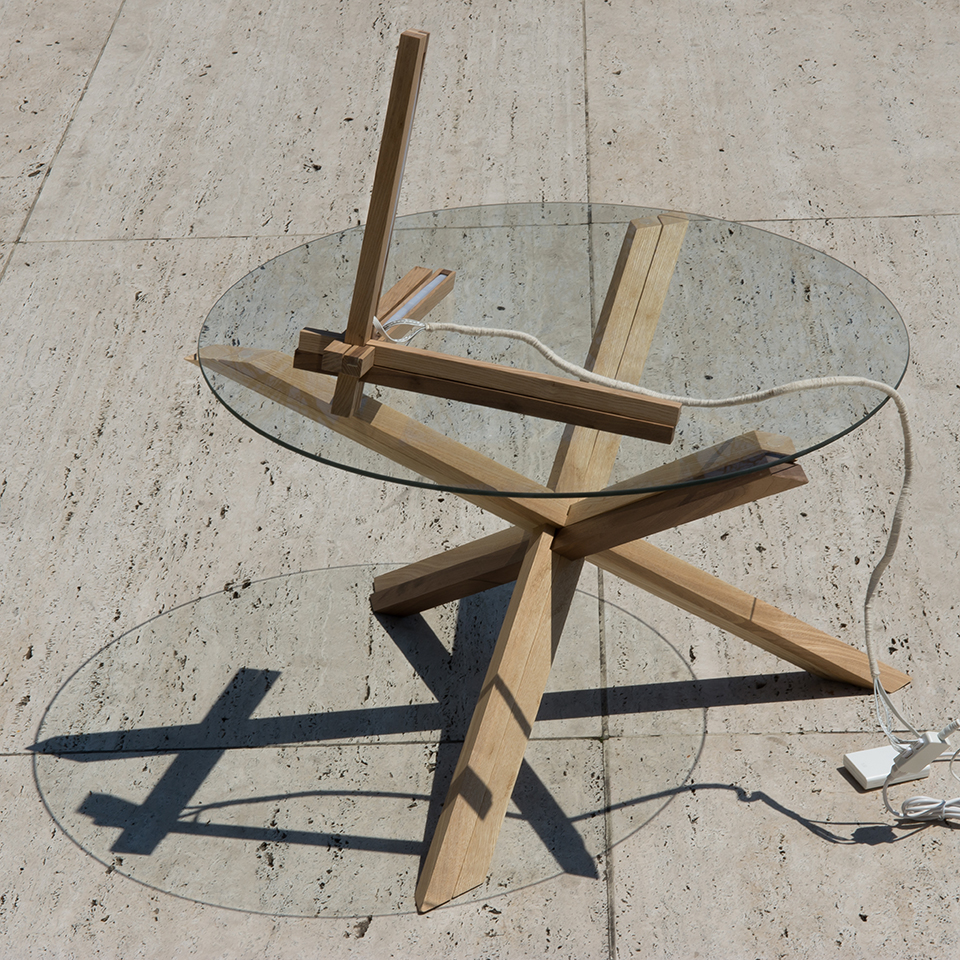
puzzle table & lamp: julia suriano
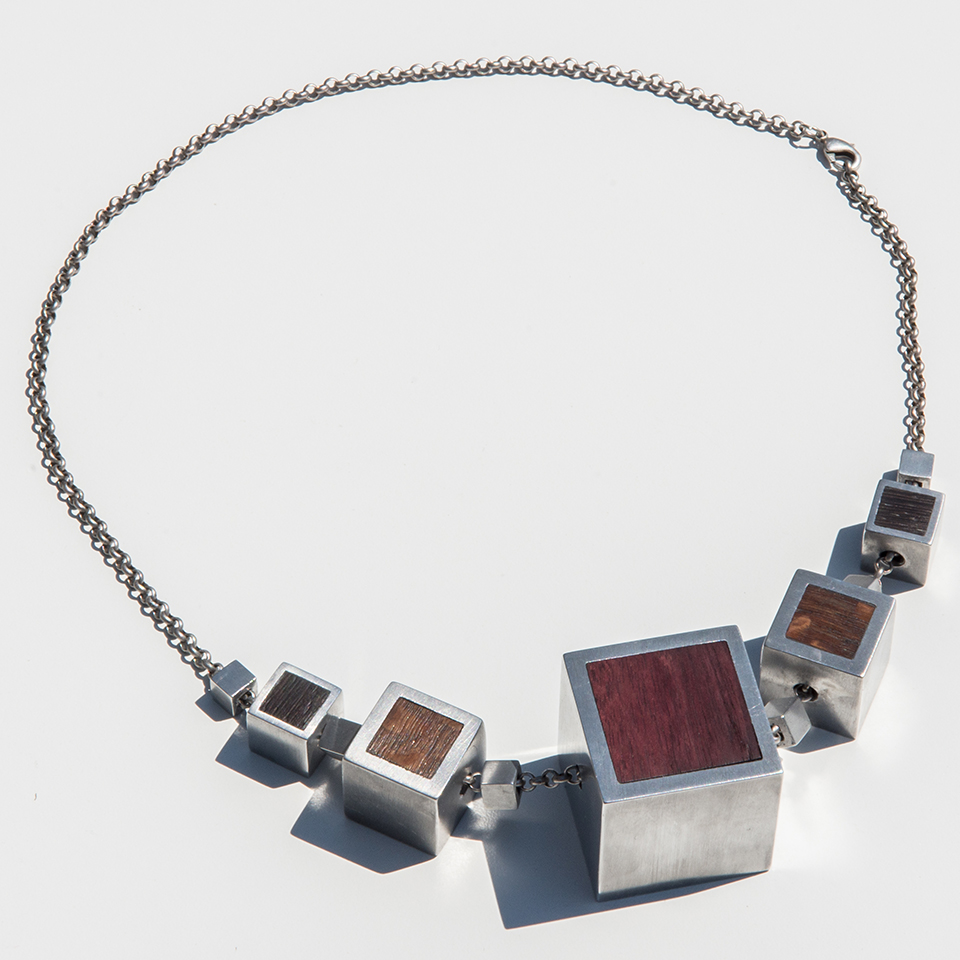
fibonacci series necklace: paul pettigrew
project schedule
Process & Production:
01.13.16 (w) Lecture(s): Project Introduction, One Tree lecture, Couleur Locale lecture
“Haec autem ita fieri debent, ut habeatur ratio firmitas, utilitas, venustatis. (Now these should be so carried out that account is taken of strength, utility, grace.)” Marcus Vitruvius, De architectura, c. 25 B.C., 1.iii.ii
Assignment: For our next class bring in an 11x17 graphic with image(s) and text identifying a functional object that only possesses 2 out of the 3 qualities described by Vitruvius, i.e.
1. The object is utilitarian, but its utility could be much improved.
2. The object is strong, but its strength can be much improved.
3. The object is not graceful and/or its gracefulness can be much improved.
Reading: Malcolm Gladwell, “The Tweaker”
01.20.16 (w) Group Pin-Up/Review:
Reading: Paul Pettigrew, “Local Global”
01.27.16 (w) Lecture: Small Items/Past Projects/Inspirational Videos
Reading: Paul Pettigrew, “Making Stuff/Dichotomy”
01.31.16 (su) (Optional) Lab: Joining, planing, ripping, crosscutting & gluing-up rough sawn lumber
02.03.16 (w) 1 on 1 Critique
Reading: David Pye, “The Nature & Art of Workmanship”
02.07.16 (su) (Optional) Lab: Cutting, squaring, drilling, countersinking, sanding & waxing aluminum
02.10.16 (w) Lecture(s): Architecture & Furniture…A Brief & Incomplete History
Reading: Enzo Mari, “Autoprogettazione”
02.17.16 (w) Shop Work: 1 on 1 Critique
Reading: Tony Wagner, “Creating Innovators Creating the iphone”
02.24.16 (w) Lecture(s): Tectonics
03.02.16 (w) Shop Work: 1 on 1 Critique
03.06.16 (su) (Optional) Lab: Wood Finishes/Finishing
03.09.16 (w) Mid-Semester Review: Fabricate a “tweaked” object or objects that are functional, structural & beautiful. Presentation documentation should include a written description that helps an auction bidder better understand the thought process that went into the making of your functional object and therefore, why they might want to bid/purchase. In addition to text, please include a full set of fabrication drawings that could be used by someone else to fabricate your functional object.
03.16.16 (w) Spring Break No Class
03.20.16 (su) (Optional) Lab: T.B.D.
03.23.16 (w) Shop Work: 1 on 1 Critique
03.30.16 (w) Shop Work: 1 on 1 Critique
04.03.16 (su) (Optional) Lab: T.B.D
04.06.16 (w) Shop Work: 1 on 1 Critique
04.13.16 (w) Shop Work: 1 on 1 Critique
04.20.16 (w) Shop Work: 1 on 1 Critique
04.27.16 (w) Shop Work: 1 on 1 Critique
05.06.16 (w) Final Review: Fabricate a second “tweaked” object or objects that are functional, structural & beautiful. Presentation documentation should include a written description that helps an auction bidder better understand the thought process that went into the making of your functional object and therefore, why they might want to bid/purchase. In addition to text, please include a full set of fabrication drawings that could be used by someone else to fabricate your functional object.
05.11.16 (w) Final grades due @ 12:00 p.m.
Donated Materials Policy:
Material donated to the class is meant to be used for projects specific to the course. Any donated material not used for projects completed during the course should be returned to the instructor for use in future classes.
Project Exhibition & Promotion Policy:
One important goal of this course is to exhibit and publish our work. This is not always possible, but the majority of projects completed since the course began Spring of 2006 have been publicly exhibited. Once projects are completed and reviewed, students should be prepared to store their projects until the time of any future exhibitions and be willing and able to work with the instructor to return their projects to IIT or the exhibition location until the exhibition is complete.
Project Material Background:
We will be working with urban wood milled from trees that have been removed from sites in and around the city of Chicago. Our initial supply of wood has been donated to our class for our use. We will be working with Ash that has been salvaged from trees that were cut down after dying from the emerald ash borer beetle infestation.
We are hoping to get additional wood later in the semester from emerald ash borer beetle infested Ash trees that have or will be cut down on grounds of McDonalds corporate headquarters. This may or may not happen soon enough for our use so stay tuned.
Project Client:
This semester we will be teaming up with the Ronald McDonald House Charities Chicagoland & Northwest Indiana to design & fabricate functional objects to be auctioned off at the Ronald McDonald House Charities annual fundraiser/auction.
There are 5 Ronald McDonald Houses in the Chicagoland area which provide a supportive ‘home away from home’ for families while their child is being treated at a nearby hospital.
From the Ronald McDonald House Charities Chicagoland & Northwest Indiana Website (http://rmhccni.org/auctiondonations/)
RMHC-CNI executes many events throughout the year to raise vital funds to support our mission of keeping families together when they need it most. At each of these events, there are exciting opportunities to donate and showcase items and/or services that are significant to you. Your donation will be featured in front of high-profile audiences and in our event program booklets.
We welcome in-kind donations of unique, one-of-a-kind experiences or services that can be used for our live auctions, silent auctions, and raffles. From a weekend retreat or a “timeshare”, to a unique spa service, golf lesson, jewelry or handbags, etc…. we will work with you to package your donation as best we can and 100% of the funds raised from your item will directly benefit and support the 153 families we serve each and every night.
Thanks to our generous donors, we are able to fulfill our mission of providing a ‘home away from home’ for families of children with complex medical needs, by offering comfort, compassion, and a sense of community. Help us continue to provide over 43,000 family nights each year at our five Ronald McDonald Houses and three Ronald McDonald Family Rooms in the Chicagoland area.
A Brief History of Charitable Giving:
2500 BCE
Ancient Hebrews use a mandatory tax, or ‘tithe,’ to benefit the poor.
500 BCE
The word ‘philanthropy’ first appears in the drama “Prometheus Bound” by Aeschylus. Phil = Love & Anthro = Man
387 BCE
Plato’s Academy, a group working for the public good of a voluntary basis, is established.
28 BCE
The first Roman emperor, Augustus, gives aid to an estimated 200,000 people.
1180 CE
Moses Maimonides authors “Mishneh Torah,” which includes the Eight Levels of Charity.
1601 CE
The Charitable Uses Act of 1601 is enacted by Parliament. It identifies what purposes can be defined as charitable.
1643 CE
The first American fundraising drive is organized by Harvard University. It raises 500 pounds.
1727 CE
The Sisters of Charity provide social assistance to the needy in Latin America.
1835 CE
Alexis de Tocqueville publishes “Democracy in America,” which highlights the philanthropic spirit of Americans as one of the country’s strengths.
1913 CE
Congress passes the Revenue Act of 1913. It exempts charitable organizations from paying taxes.
1914 CE
World’s first community foundation is established in Cleveland, Ohio: The Cleveland Foundation.
1931 CE
The first donor-advised fund is established by a community foundation in Winston-Salem, N.C.
1935 CE
Corporations are now allowed to deduct charitable contributions.
01.13.16 (w) Lecture(s): Project Introduction, One Tree lecture, Couleur Locale lecture
“Haec autem ita fieri debent, ut habeatur ratio firmitas, utilitas, venustatis. (Now these should be so carried out that account is taken of strength, utility, grace.)” Marcus Vitruvius, De architectura, c. 25 B.C., 1.iii.ii
Assignment: For our next class bring in an 11x17 graphic with image(s) and text identifying a functional object that only possesses 2 out of the 3 qualities described by Vitruvius, i.e.
1. The object is utilitarian, but its utility could be much improved.
2. The object is strong, but its strength can be much improved.
3. The object is not graceful and/or its gracefulness can be much improved.
Reading: Malcolm Gladwell, “The Tweaker”
01.20.16 (w) Group Pin-Up/Review:
Reading: Paul Pettigrew, “Local Global”
01.27.16 (w) Lecture: Small Items/Past Projects/Inspirational Videos
Reading: Paul Pettigrew, “Making Stuff/Dichotomy”
01.31.16 (su) (Optional) Lab: Joining, planing, ripping, crosscutting & gluing-up rough sawn lumber
02.03.16 (w) 1 on 1 Critique
Reading: David Pye, “The Nature & Art of Workmanship”
02.07.16 (su) (Optional) Lab: Cutting, squaring, drilling, countersinking, sanding & waxing aluminum
02.10.16 (w) Lecture(s): Architecture & Furniture…A Brief & Incomplete History
Reading: Enzo Mari, “Autoprogettazione”
02.17.16 (w) Shop Work: 1 on 1 Critique
Reading: Tony Wagner, “Creating Innovators Creating the iphone”
02.24.16 (w) Lecture(s): Tectonics
03.02.16 (w) Shop Work: 1 on 1 Critique
03.06.16 (su) (Optional) Lab: Wood Finishes/Finishing
03.09.16 (w) Mid-Semester Review: Fabricate a “tweaked” object or objects that are functional, structural & beautiful. Presentation documentation should include a written description that helps an auction bidder better understand the thought process that went into the making of your functional object and therefore, why they might want to bid/purchase. In addition to text, please include a full set of fabrication drawings that could be used by someone else to fabricate your functional object.
03.16.16 (w) Spring Break No Class
03.20.16 (su) (Optional) Lab: T.B.D.
03.23.16 (w) Shop Work: 1 on 1 Critique
03.30.16 (w) Shop Work: 1 on 1 Critique
04.03.16 (su) (Optional) Lab: T.B.D
04.06.16 (w) Shop Work: 1 on 1 Critique
04.13.16 (w) Shop Work: 1 on 1 Critique
04.20.16 (w) Shop Work: 1 on 1 Critique
04.27.16 (w) Shop Work: 1 on 1 Critique
05.06.16 (w) Final Review: Fabricate a second “tweaked” object or objects that are functional, structural & beautiful. Presentation documentation should include a written description that helps an auction bidder better understand the thought process that went into the making of your functional object and therefore, why they might want to bid/purchase. In addition to text, please include a full set of fabrication drawings that could be used by someone else to fabricate your functional object.
05.11.16 (w) Final grades due @ 12:00 p.m.
Donated Materials Policy:
Material donated to the class is meant to be used for projects specific to the course. Any donated material not used for projects completed during the course should be returned to the instructor for use in future classes.
Project Exhibition & Promotion Policy:
One important goal of this course is to exhibit and publish our work. This is not always possible, but the majority of projects completed since the course began Spring of 2006 have been publicly exhibited. Once projects are completed and reviewed, students should be prepared to store their projects until the time of any future exhibitions and be willing and able to work with the instructor to return their projects to IIT or the exhibition location until the exhibition is complete.
Project Material Background:
We will be working with urban wood milled from trees that have been removed from sites in and around the city of Chicago. Our initial supply of wood has been donated to our class for our use. We will be working with Ash that has been salvaged from trees that were cut down after dying from the emerald ash borer beetle infestation.
We are hoping to get additional wood later in the semester from emerald ash borer beetle infested Ash trees that have or will be cut down on grounds of McDonalds corporate headquarters. This may or may not happen soon enough for our use so stay tuned.
Project Client:
This semester we will be teaming up with the Ronald McDonald House Charities Chicagoland & Northwest Indiana to design & fabricate functional objects to be auctioned off at the Ronald McDonald House Charities annual fundraiser/auction.
There are 5 Ronald McDonald Houses in the Chicagoland area which provide a supportive ‘home away from home’ for families while their child is being treated at a nearby hospital.
From the Ronald McDonald House Charities Chicagoland & Northwest Indiana Website (http://rmhccni.org/auctiondonations/)
RMHC-CNI executes many events throughout the year to raise vital funds to support our mission of keeping families together when they need it most. At each of these events, there are exciting opportunities to donate and showcase items and/or services that are significant to you. Your donation will be featured in front of high-profile audiences and in our event program booklets.
We welcome in-kind donations of unique, one-of-a-kind experiences or services that can be used for our live auctions, silent auctions, and raffles. From a weekend retreat or a “timeshare”, to a unique spa service, golf lesson, jewelry or handbags, etc…. we will work with you to package your donation as best we can and 100% of the funds raised from your item will directly benefit and support the 153 families we serve each and every night.
Thanks to our generous donors, we are able to fulfill our mission of providing a ‘home away from home’ for families of children with complex medical needs, by offering comfort, compassion, and a sense of community. Help us continue to provide over 43,000 family nights each year at our five Ronald McDonald Houses and three Ronald McDonald Family Rooms in the Chicagoland area.
A Brief History of Charitable Giving:
2500 BCE
Ancient Hebrews use a mandatory tax, or ‘tithe,’ to benefit the poor.
500 BCE
The word ‘philanthropy’ first appears in the drama “Prometheus Bound” by Aeschylus. Phil = Love & Anthro = Man
387 BCE
Plato’s Academy, a group working for the public good of a voluntary basis, is established.
28 BCE
The first Roman emperor, Augustus, gives aid to an estimated 200,000 people.
1180 CE
Moses Maimonides authors “Mishneh Torah,” which includes the Eight Levels of Charity.
1601 CE
The Charitable Uses Act of 1601 is enacted by Parliament. It identifies what purposes can be defined as charitable.
1643 CE
The first American fundraising drive is organized by Harvard University. It raises 500 pounds.
1727 CE
The Sisters of Charity provide social assistance to the needy in Latin America.
1835 CE
Alexis de Tocqueville publishes “Democracy in America,” which highlights the philanthropic spirit of Americans as one of the country’s strengths.
1913 CE
Congress passes the Revenue Act of 1913. It exempts charitable organizations from paying taxes.
1914 CE
World’s first community foundation is established in Cleveland, Ohio: The Cleveland Foundation.
1931 CE
The first donor-advised fund is established by a community foundation in Winston-Salem, N.C.
1935 CE
Corporations are now allowed to deduct charitable contributions.
